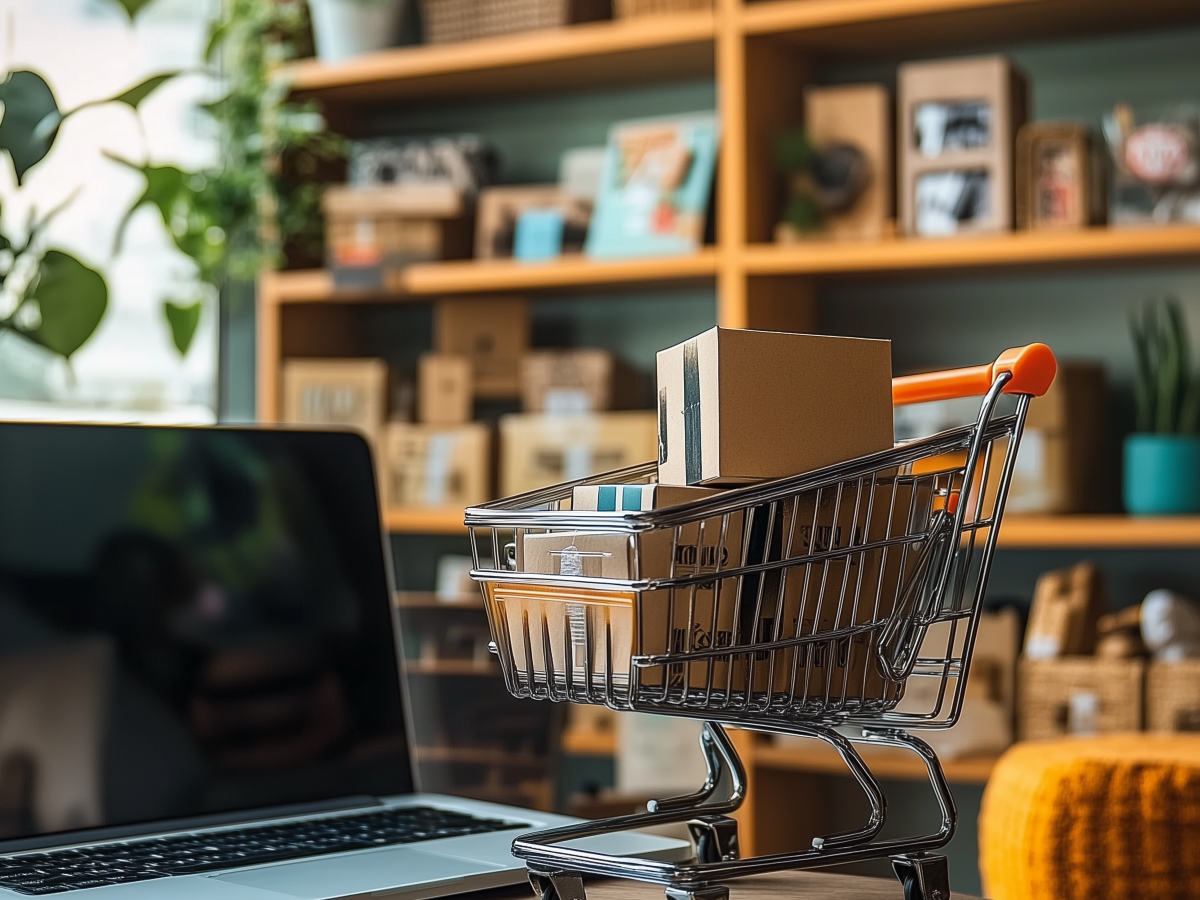Retaining customers is more profitable than acquiring new ones
Most businesses chase new customers like it’s a gold rush. But the real gold? It’s the customers you already have. Retaining existing customers isn’t a cost-saving strategy, it’s a profit-maximizing one. Acquiring a new customer can cost five times more than keeping an existing one, and repeat customers spend more over time. That’s not theory; it’s a fundamental principle of business.
For Shopify store owners, customer retention is an engine of long-term stability. Instead of pouring resources into relentless ad campaigns and one-off promotions, focus on building loyalty. When customers trust your brand, they don’t just buy, they advocate. They return without needing another marketing push, reducing your dependence on ever-rising ad costs.
The key metric here is Customer Lifetime Value (CLV), the total revenue a customer generates during their relationship with your brand. High CLV means your business is establishing a sustainable revenue stream. The more value customers see in your brand, the less likely they are to leave for a competitor.
Personalization increases customer engagement and retention
People don’t want generic. They want something that feels like it was made for them. In eCommerce, personalization has become the expectation. The more relevant your store feels, the more likely customers are to stick around. Shopify’s personalization tools, like Bold Personalization and Nosto, make it possible to offer curated product recommendations based on browsing behavior, purchase history, and even location.
Think about it: if someone buys a laptop from your store, should they see random items next time they visit? No. They should see laptop accessories, extended warranties, or related tech that actually matters to them. That’s how you increase engagement and keep customers coming back.
But here’s the nuance: personalization needs to feel helpful, not intrusive. Done wrong, it can be creepy, nobody wants to feel like they’re being stalked by an algorithm. Transparency and control are key. Let customers know why they’re seeing certain recommendations and give them the ability to adjust their preferences.
“The goal is simple: make every visit to your store feel like it was designed just for them. Because if your competitors aren’t doing it yet, they will be soon.”
Loyalty programs encourage repeat purchases
Loyalty is a two-way street. Customers will stick with your brand if they feel rewarded for it. That’s where loyalty programs come in. Shopify apps like Smile.io and Stamped.io make it easy to create structured reward systems that encourage repeat purchases. And here’s the key: simple point-based systems are fine, but tiered loyalty programs are better.
Think of it like this: You want your best customers to feel like VIPs. If they reach a certain spending level, unlock bigger rewards. Maybe it’s early access to new products, special discounts, or even exclusive experiences. The higher the tier, the more reason they have to keep buying from you instead of a competitor.
But don’t overcomplicate it. If customers have to read a manual to understand how your loyalty program works, they won’t bother. Make rewards clear, achievable, and desirable. And don’t just reward purchases, reward engagement. Give points for referrals, reviews, and social media shares.
A well-designed loyalty program turns customers into ambassadors. If you give people a reason to stay, they won’t need an incentive to leave.
Post-purchase engagement strengthens customer relationships
Most brands think the sale is the end of the journey. It’s not. It’s just the beginning. A strong post-purchase strategy builds lasting relationships and keeps customers engaged beyond their first order.
Start with a thank-you email, simple, but effective. A personalized message (not just a generic confirmation) makes customers feel valued. Then, follow up with recommendations that complement their purchase. Bought a coffee maker? Offer a discount on premium coffee beans. Purchased running shoes? Suggest a fitness tracker. This keeps customers connected to your brand rather than forgetting about you after checkout.
Another powerful move? Educational content. Show customers how to get the most out of their purchase. A short tutorial, care guide, or pro tips email adds value and positions your brand as helpful, not just transactional.
And if you really want to lock in repeat business, offer a return incentive, a discount on their next order or an exclusive offer only available to returning customers. Shopify’s email marketing integrations make all of this automated and scalable.
Customers remember experiences, not just products. Make the post-purchase journey as smooth and engaging as the buying process, and they’ll keep coming back.
Subscription models improve customer retention
People love convenience. If they can automate a purchase rather than remembering to reorder, they will. That’s why subscription models work so well for retention. They eliminate friction, set up repeat purchases, and create predictable revenue. Shopify apps like Recharge and Bold Subscriptions make setting up a subscription service simple.
The key here is flexibility. Customers don’t want to feel locked into a rigid schedule. Give them control over how often they receive deliveries, let them skip shipments, or allow them to modify their subscription without hassle. The more control they have, the less likely they are to cancel.
And let’s be clear: subscriptions aren’t just for essentials like coffee, pet food, or skincare. Luxury and lifestyle brands can do it too. Think curated monthly boxes, VIP memberships, or early access to limited-edition products.
“Subscription models build long-term relationships. If done right, customers need to return. They never leave.”
Social proof builds brand trust and loyalty
Trust is everything in business. You can have the best product in the world, but if customers don’t trust you, they won’t buy. That’s where social proof comes in. People trust other people more than they trust brands. When customers see others raving about your product, they’re far more likely to believe it’s worth their money.
Social proof comes in many forms. Customer reviews are the foundation, if your product has hundreds of positive reviews, that’s instant credibility. But don’t stop there. Encourage user-generated content (UGC), photos, videos, and testimonials from real customers. Seeing other people using and loving your product removes hesitation and builds confidence.
Use social media engagement. Branded hashtags, influencer collaborations, and customer shoutouts create a community around your brand. Feature real customer photos on product pages, re-share their content, and highlight reviews in your marketing.
And here’s the thing, even negative reviews help. They show that feedback is real, and how you respond to criticism says a lot about your brand. A well-handled complaint can turn a skeptical customer into a loyal one.
In short: Don’t just tell people your product is great. Show them that others already believe it.
Abandoned cart recovery increases sales and retention
Cart abandonment is one of the biggest problems in eCommerce. Customers add items to their cart, get distracted, and never come back. The good news? Shopify gives you the tools to recover those lost sales.
Automated abandoned cart emails remind customers about the items they left behind. A well-timed message, within a few hours of abandonment, can boost conversion rates. Make the email personal, include images of their selected products, and, if necessary, sweeten the deal with a discount or free shipping.
For even higher success rates, use SMS reminders with tools like Postscript. People check texts faster than emails, making SMS an effective nudge. If a customer abandons their cart, a short, friendly text might be all they need to complete the purchase.
Creating urgency works, too. Let customers know if stock is running low or if their discount expires soon. No one likes missing out.
Every abandoned cart is a potential sale. A smart recovery strategy turns lost revenue into profit, without spending extra on new customer acquisition.
Exclusive discounts reward returning customers
Everyone loves a deal. But discounting for the sake of discounting? That’s a race to the bottom. Instead, use exclusive discounts strategically to reward returning customers and drive loyalty.
Shopify Plus allows you to create personalized discount codes for past buyers. Instead of generic promotions, make customers feel special, offer them early access to new products, members-only pricing, or surprise discounts based on their purchase history. This creates a VIP experience that makes them feel valued, not just like another sale.
Another powerful approach? Gamified discounts. Offer progressively better deals as customers engage more with your brand. For example, after three purchases, they unlock a 10% discount. After five, maybe they get 15%. This keeps them coming back for the next level of rewards.
But be careful, constant discounts can devalue your brand. If people always expect a sale, they’ll never buy at full price. The key is making discounts feel exclusive, not expected.
“In short: Discounts should be a thank you, not a desperate attempt to sell.”
Referral programs turn customers into brand advocates
Word-of-mouth is the most powerful form of marketing. A happy customer telling their friends about your brand is more effective than any ad campaign. That’s why referral programs work so well, they turn loyal customers into your best salespeople.
Shopify apps like ReferralCandy and Smile.io make it easy to reward customers for bringing in new buyers. The simplest model? Give both the referrer and the new customer an incentive. For example, “Give your friend 10% off, and get $10 store credit when they buy.” This creates a win-win situation, customers feel good about sharing, and you gain new business.
Referral programs work because they feel organic. People trust recommendations from friends more than any advertisement. And once a new customer arrives through a referral, they’re more likely to stick around, because they already trust the brand.
The secret to making referral programs work? Make it easy. No long sign-up process, no complicated rules. Just a simple, effortless way for customers to share your brand and get rewarded.
If your customers love your product, they’ll want to tell others. Give them a reason to do it.
Exceptional customer support boosts retention
Bad customer service is expensive. Not just in refunds or lost sales, but in reputation damage. One bad experience can spread like wildfire. But here’s the flip side: exceptional support turns customers into lifelong fans.
Shopify’s live chat tools like Shopify Inbox and Gorgias let you offer real-time problem-solving. If a customer has a question, answering it fast, before they leave your site, can be the difference between a lost sale and a conversion.
But great support isn’t just about fixing problems. It’s about being proactive. Offer self-service options like an easy-to-navigate FAQ section, video tutorials, and help centers. Empower customers to solve minor issues themselves while keeping human support available for bigger concerns.
A simple but effective move? Follow up after a support interaction. Send a quick message asking if everything was resolved to their satisfaction. It shows customers you care and gives them another touchpoint with your brand.
And here’s a reality check: Customers don’t expect perfection. They expect responsiveness. If something goes wrong, they want to know you’re on it. Handle issues with speed, transparency, and a personal touch, and you’ll keep customers long after the initial sale.
Personalized email campaigns improve customer engagement
Email is still the king of direct communication. It’s personal, cost-effective, and has one of the highest ROI in marketing. But here’s the catch, generic email blasts don’t work anymore. Customers expect personalization. They want emails that feel like they were written just for them.
Shopify’s Klaviyo and Omnisend make this possible. These tools allow you to segment your audience based on behavior, purchase history, and preferences. This means you’re sending the right emails to the right people at the right time.
For example, if a customer just made their first purchase, send them a thank-you email with a special offer for their next order. If it’s been a few months since their last purchase, remind them about products they might need to restock. Birthdays? Send them a personalized discount code.
The secret sauce? Behavior-based automation. Instead of guessing when to email customers, set up smart workflows that trigger emails based on their actions. If someone browses a product multiple times but doesn’t buy, send them a nudge with a testimonial or a limited-time offer.
Personalized email campaigns aren’t just about selling. They’re about staying relevant. If done right, they don’t feel like marketing, they feel like a service.
A branded mobile app increases customer loyalty
A website is good. A mobile-optimized site is better. But a dedicated mobile app? That’s next level.
Customers who download your app are making a commitment. They’re choosing to keep your brand in their pocket, ready for instant access. And data proves it, mobile app users are more likely to convert and buy more frequently than website visitors.
A well-designed Shopify app gives customers an easy, one-tap shopping experience. But it’s not just about convenience, it’s about engagement. With push notifications, you can remind users about new arrivals, exclusive sales, and rewards without relying on email or ads.
Think about it. Email open rates average 20-30%. Push notification open rates? Up to 90%.
But an app needs to add value. It can’t just be a mobile version of your store, it should offer something extra. Think exclusive app-only discounts, loyalty perks, or early access to product drops. Gamify the experience. Make customers want to open your app daily, even when they’re not actively shopping.
Not every Shopify store needs an app, but if you have a strong customer base, high repeat purchase rates, or a subscription model, it can skyrocket retention. Because when your store lives on a customer’s home screen, they’re far more likely to keep coming back.
Key metrics for measuring shopify customer retention
You can’t improve what you don’t measure. Customer retention is about data. And Shopify, combined with the right analytics tools, gives you everything you need to track what’s working and what’s not.
Here are the must-watch metrics for retention:
1. Customer Lifetime Value (CLV)
This is your North Star. CLV measures the total revenue a customer generates over their relationship with your store. A high CLV means customers aren’t just buying once—they’re sticking around. If CLV is low, it’s a red flag that you’re churning through customers instead of keeping them.
2. Repeat Purchase Rate (RPR)
Measures the percentage of customers who make more than one purchase. If this number is rising, your retention strategies are working. If not, you’re likely losing customers after their first purchase.
3. Churn rate
The opposite of retention. It tells you how many customers stop buying from you over time. If churn is high, something’s broken—either in your product, customer experience, or engagement strategy.
4. Net Promoter Score (NPS)
Simple but powerful. Ask customers: “How likely are you to recommend our store to a friend?” Their response gives you a direct look into customer satisfaction and loyalty. The higher the NPS, the more customers love your brand—and the more likely they are to stick with you.
5. Engagement metrics
Email open rates, click-through rates, and time spent on your site all indicate how connected customers feel to your brand. If engagement is low, it means customers aren’t excited about your content or offers.
How to use these metrics
- Set up automated tracking in Shopify and integrate tools like Google Analytics, Klaviyo, or Smile.io.
- Compare month-over-month trends. If CLV and repeat purchase rate are rising, your strategies are working. If churn is increasing, it’s time to rethink your retention plan.
- Test and iterate. If emails aren’t converting, tweak the messaging. If loyalty program participation is low, adjust rewards. The goal is constant improvement.
Retention isn’t a guessing game. The numbers tell the story. Pay attention, adjust, and optimize.
Final thoughts
Acquiring customers is expensive. Losing them is even worse. The best Shopify brands understand that success isn’t just about selling, it’s about keeping.
When you focus on retention, you spend less, grow faster, and build stronger relationships. It’s a long-term game, but the payoff is massive.
Every strategy we’ve covered, personalization, loyalty programs, post-purchase engagement, abandoned cart recovery, exclusive discounts, referrals, customer support, mobile apps, and email marketing, feeds into one ultimate goal: making customers want to come back.
Because when customers stay, your business thrives.
Key takeaways for decision-makers
- Retention drives profitability: Acquiring new customers is costly, while repeat buyers spend more and require less marketing. Leaders should prioritize retention strategies like loyalty programs and personalization to maximize long-term revenue.
- Personalization is a competitive advantage: Customers expect tailored experiences. Using Shopify’s data-driven tools to customize recommendations, emails, and promotions increases engagement and repeat purchases.
- Automation reduces churn: Smart email workflows, abandoned cart recovery, and subscription models keep customers engaged. Implementing automated touchpoints ensures ongoing interaction without manual effort.
- Customer loyalty requires proactive engagement: Offering post-purchase support, exclusive discounts, and referral incentives fosters long-term relationships. Executives should invest in a seamless customer experience to maintain brand loyalty.





